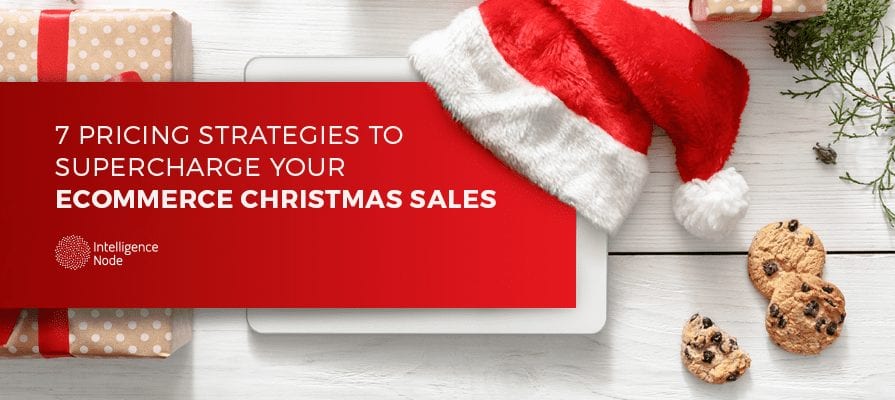As retailers continue to lament the nosedive retail sales have taken, eCommerce is a bright spot amid an increasingly bleak retail outlook. Sales are notoriously difficult to predict, especially online, but 2015 can teach us much about what to expect in 2016. Make sure your brand is ready for the season with these 2016 eCommerce holiday shopping predictions.
Online Sales Are Booming
Online sales are growing like never before. In 2015, eCommerce grew by more than 13%. On Cyber Monday alone, consumers shelled out more than $3 billion. And retailers who think that only brick and mortar stores benefit from Black Friday should think again. Consumers spent $2.74 billion on Black Friday in 2015.
Consumers appreciate the convenience and privacy of online shopping. They don’t have to deal with pushy sales representatives, can spend hours curating the perfect shopping cart, and don’t have to fight lines or traffic. For your business to capitalize on these preferences, you need to make the eCommerce sales process as seamless and stress-free as possible. That demands an optimized site, clear pricing, and detailed information about each of your products. A helpful live chat can close the customer service gap, and may even close the deal on a few extra purchases.
Consumers Buy for Themselves, Too
Ecommerce retailers who market only giftable products make a potentially fatal error. Consumers shop for themselves during the season of frenzied purchasing, spending an average of $139. Use this trend to your advantage by offering a variety of sales, including on items that customers typically only purchase for themselves. Because consumers often purchase gifts that they’d like to receive themselves, buy one get one deals can be especially profitable. Consider also offering gift certificates or discounts on a future purchase to customers who shop during the holidays. This is an investment in future sales that can help you start 2017 on a high note.
Discounts Are Waning
Big box retailers entered the 2015 holidays season with leaner inventories than in previous years. That trend may continue in 2016. This means that retailers have fewer incentives to offer major promotions since they don’t need to offload lots of inventory.
This means that businesses which offer incredible sales may pull consumers away from big box retailers. It also means that your sales might not have to be as big as you think to get the attention of customers. No matter what eCommerce pricing strategy you use, make sure to build excitement in the weeks leading up to a sale. Customers can’t participate in sales they don’t know about.
Some Days Are Bigger Than Others
Cyber Monday and Black Friday are the perennial favorites of discount-hungry consumers, but they’re not the only big shopping days. Plan your sales around other popular days and watch the business flood in. A Google Analytics study points to the shopping days on which ads most often lead to purchases. Those are:
- The second Monday in December (December 12th in 2016)
- The second Tuesday in December (December 13th in 2016)
- The third Monday in December (December 19th in 2016)
Since your ads are more likely to translate into conversions on these days, plan a more aggressive marketing strategy, and don’t shy away from spending a little extra cash.
Mobile Shopping is Big
Consumers are increasingly shopping on mobile devices. If your site isn’t optimized for mobile, if your apps don’t work well, or if product descriptions disappear on your site’s mobile page, you’re losing business for no good reason.
Consumers often build a shopping cart on their desktop, then buy on the go. And sometimes they curate their cart on the go, then purchase at home. Ensure your site can easily switch between mobile and a desktop by making it easy for customers to set up an account that saves their cart.
Shopping Lasts Longer Than You Think
Very few consumers finish their holiday shopping on Black Friday or Cyber Monday. Indeed, many continue a shopping spree well into the new year. Accommodate this trend by continuing sales after the holiday, and offering incentives for consumers who want to return purchases or buy something for themselves.
People Purchase an Idea
The advent of sites such as Pinterest make it clear that consumers aren’t just purchasing objects. They’re purchasing ideas, and often entire lifestyles. You will make more sales if your products fit neatly into consumers’ dreams for their lives. Selling products that work well together — shoes and bags with the same print, a bookshelf that matches a baby crib — helps consumers envision how a product will work in real life. It also makes your products ripe for use on sites such as Pinterest, where a wider audience with a large disposable income may see them.
Last-Minute Shopping and Fast Delivery
The advent of free or cheap overnight delivery on sites such as Amazon means that more consumers are waiting till the last minute to make their purchases. Compete with these sites by shipping items quickly and offering affordable last-minute shipping. Retailers that delay shipping for days, that don’t provide tracking, or that routinely deliver items later than promised stand to lose out in an increasingly competitive market. Consumers want their merchandise now, and if they have to wait, they’ll go somewhere else.
[tac_ga url=”http://info.intelligencenode.com/a-comprehensive-guide-to-competitive-online-retail-pricing-strategies” category=”Ebook Download” action=”Click” label=”Pricing Guide” target=”_blank”]





